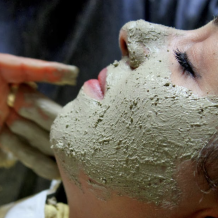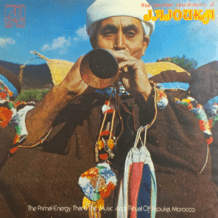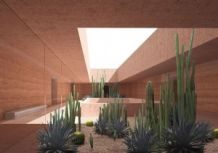 Stuffed with almond paste, dusted with confectionery sugar and flaking with each bite, Moroccan pastries are reserved for special occasions. Cooking is regarded as an extravagant art. Large meals are prepared for births, circumcisions, weddings and many holidays. Just after the main dish, pastries take their course to add a sweet touch before the seasonal fruit is served.
Stuffed with almond paste, dusted with confectionery sugar and flaking with each bite, Moroccan pastries are reserved for special occasions. Cooking is regarded as an extravagant art. Large meals are prepared for births, circumcisions, weddings and many holidays. Just after the main dish, pastries take their course to add a sweet touch before the seasonal fruit is served.
As a Guest
Travelers that have the opportunity to stay with a Moroccan family will experience a breakfast for kings. The host family traditionally will serve a variety of pastries for breakfast: Rghaif (flat buttery Moroccan pastries), Stenj (Moroccan doughnuts), French pastries (croissants), along with Bayd (eggs, cooked with cumin and sesame seeds), orange juice or coffee.
Pancakes
Pancakes are a traditional breakfast food as well as a sweet treat in Morocco. On holidays they are adorned with honey, icing, sugar, butter or a rich almond paste. Baghrir pancakes are fried in hot oil, with dot-like air craters on on side.
History
These succulent Moroccan sweets were once only served to the sultans, Islamic leaders, and the elite. When spices were as prized as gold, lower classes were rarely able to partake in such indulgences. Now, when neighbors and friends come together during their afternoon break they enjoy the company with a pot of mint tea and pastries.
Souks
The smell of fresh pastries linger through the city streets. All throughout the maze-like souks vendors sell a wide range of Moroccan sweets. A savory dish, native to Morocco, is bastila, a multi-layered pastry filled with shredded chicken or pigeon meat gently and brushed with a lemon-onion sauce and covered in almonds, cinnamon and sugar. Other flaky croissants are served with warm honey, apricot or other jams.
All Shapes and Sizes
Moroccan sweets come in all shapes and sizes, generally pastries are light and healthy often made with nuts. Some are long and thin, others round- filled or hallow. Gazelle horns, a crescent shaped treat is of the most famous Moroccan sweets. Check out the recipe below!
Recipe: Kaab el-ghzal (gazelle horns)
serving size: 16 pastries
bake until lightly golden at 350 degrees F
1 3/4 cups of flour
2 tbsp. melted butter
2 tbsp. orange flower water
2 large egg yolks, beaten
A pinch of salt
Icing sugar
Almond Paste:
2 cups of finely ground Almonds
1 cup icing sugar
2 tbsp. orange flower water
2 tbsp. melted butter
2 egg yolks beaten
1/2 tsp. cinnamon
Directions: Combine all the ingredients for the almond paste in a bowl, stir until smooth- divide paste into 16 pieces.
Take each piece and roll it into small cylinders (7cm long)
In another bowl, combine flour and salt, melted butter, orange flower and one egg yolk, add cold water to form a soft dough. Kneed for ten minutes, roll out into a thing rectangle- then cut into strips.
Place the almond paste on each pastry, spacing them 3 cm apart. Fold in half to seal the paste. Moisten both sides of the pastry with the remaining egg yolk and a small amount of water. Cut each pasty into a crescent shape, place on a buttered and floured baking sheet.






